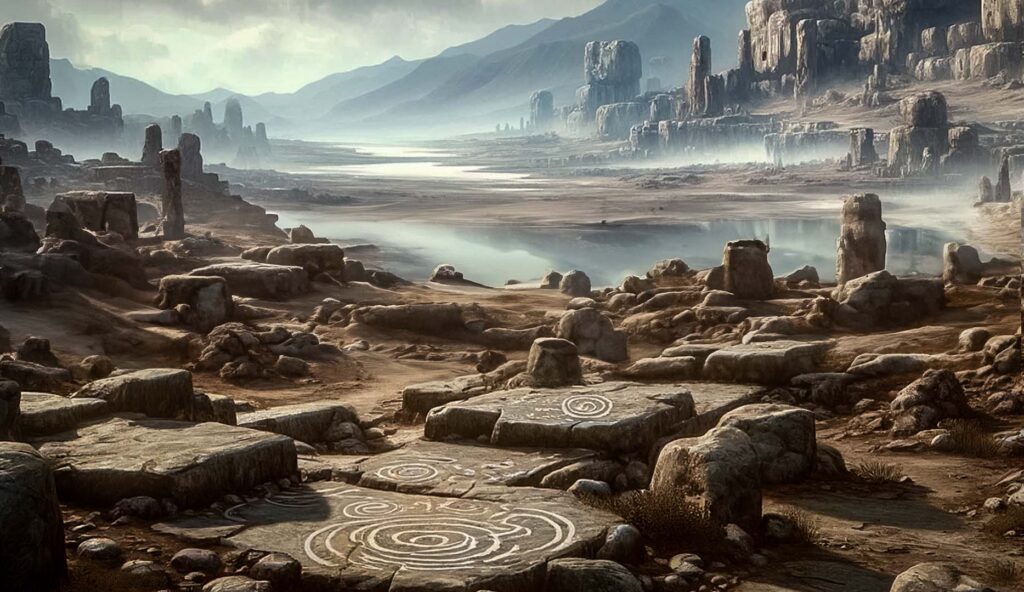PANKOT III, ALPHA ISLES — Two years ago, in 2399, the discovery of the once-thought-lost homeworld of the Chalnoth called scholars to re-examine decades of established history.
In the small system of Pankot III, tucked into one of the furthest corners of the Alpha Isles, a large-scale “turf war” erupted between two factions of Chalnoth tribes. This conflict was witnessed by the resident Isles patrol ship, the U.S.S. Arrow (NCC-69829). On one side stood a traditionalist bulwark of Chalnoth culture. On the other, a radical wing of the usually nomadic people actively working against the more monarchist bent of the current regime.
Complicating matters was a recently declassified report and large-scale data package, reportedly the reason the U.S.S. Arrow became involved in the first place. This package contained brand new, deeply sourced materials claiming that the Chalnoth once enjoyed a previously unknown “Golden Age,” during which their nomadic ways were more contained across the Pankot III system, which also served as the seat of their empire, even decades before the discovery of their current homeworld Chalna (aka Kaus Borealis V of the Beta Quadrant).
“To say this topples everything we know about the Chalnoth,” said Lieutenant Silur Chanht Cree, Historian of the U.S.S. Arrow, in 2399. “Would be a massive understatement.” Along with maps and first-hand accounts of this pre-wandering Chalnoth society, the crew of the Arrow discovered widespread ruins across the main planet of Pankot III. These ruins contained corroborating pictographs and even ancient hologram programs with a “living record” of the first Chalnoth.
“We used to have this entire concept of the Chalnoth,” continued Cree. “We knew them as these reavers to be feared when met in open space. But now we have a whole new context for them! This whole unexamined nuance for their culture and current power structures. It’s fascinating and will only get more so as we continue to study these new findings.”
However, not everyone in the Isles shared Cree’s excitement at the time.
Researchers at the nearby Atlas Base, one of the main scientific outposts of the Isles and a frequent target for Chalnoth raids, claimed this might be used as a smokescreen to mask recent Chalnoth attacks, including attacks against the Starfleet ship assigned to patrol the Isles, the USS Arrow.
“A lot of us have been here in the Isles for a long time now,” said Atlas Base research assistant Professor Laurence Schiavone in 2399. “And it’s going to take a lot more than some raw gold and dusty bones of old buildings to make us forget how hard they made our lives out here, especially in the first months. Am I cognizant of the research potential of all of this? Absolutely I am. But at the same time, when you’ve had to hide from their ships overhead in the middle of your own digs…it makes it real hard to get excited about anything that paints them well, you know?”
By the end of 2399, representatives from the Starfleet Diplomatic Corps and the Federation Archaeologist Guild had been dispatched to Chalna, alongside supervised teams to Pankot III to catalogue the system’s ruins and complexes. The “turf war” had calmed for the moment, facilitated by the factions’ contact with the Arrow crew. It was reported that agents of both factions had started preliminary talks on how to proceed, focusing mainly on ongoing research and dig site efforts on Pankot III. Early word from these talks was icy but productive.
This historic discovery and the subsequent events in 2399 marked a significant shift in our understanding of Chalnoth history and culture, setting the stage for further research and cooperation in the years that followed.
Comments
comments

